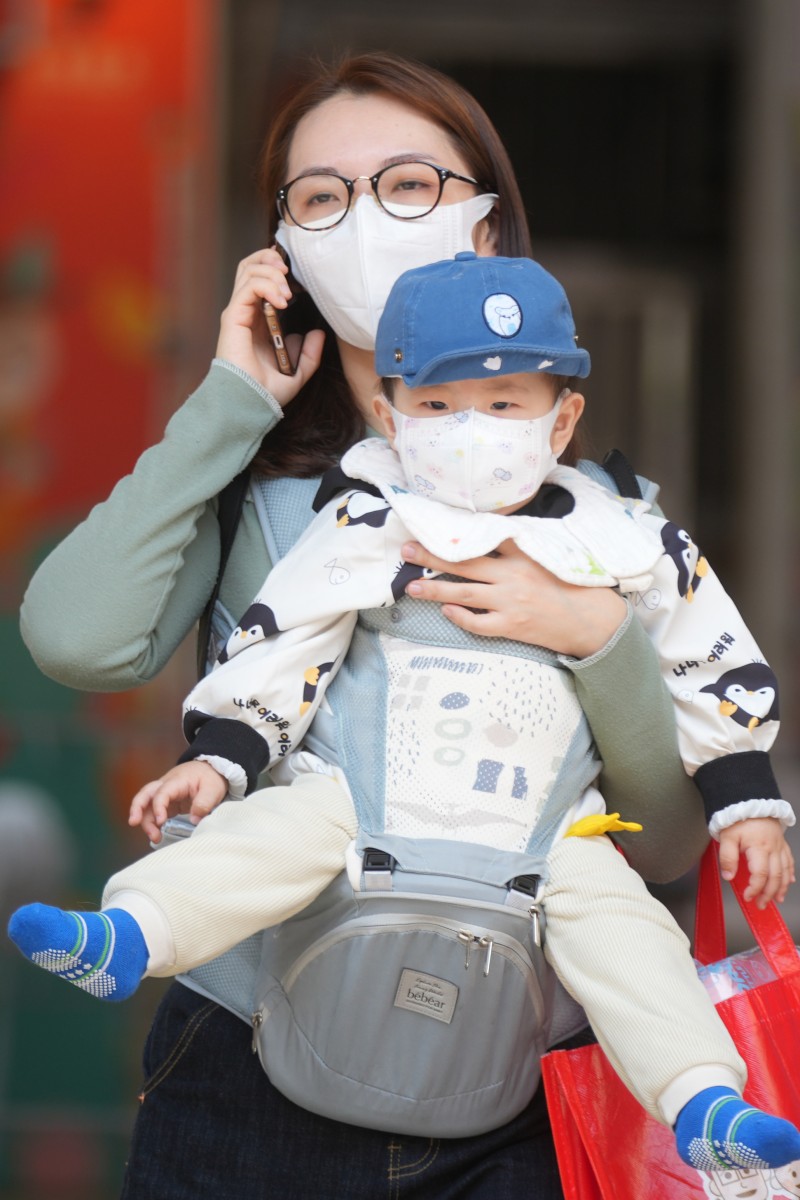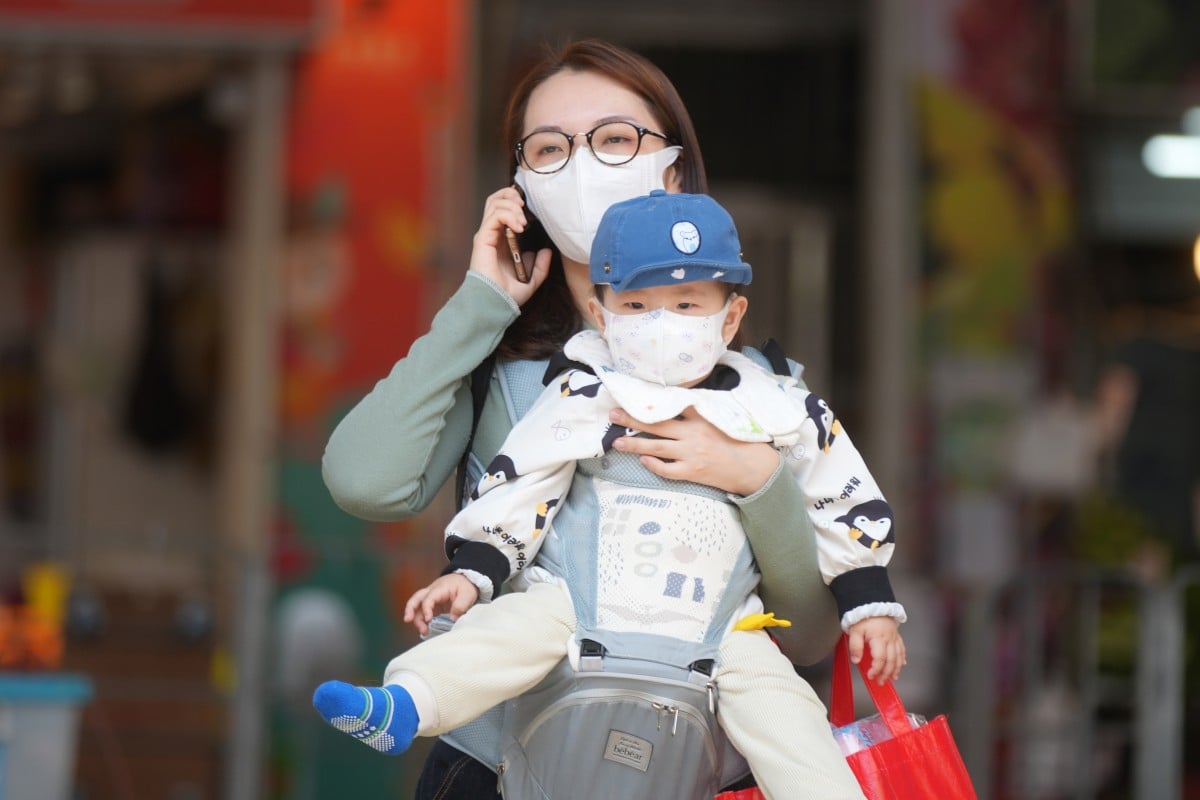
Study Buddy (Challenger): Hong Kong couples say no to having children and experts don’t know how to reverse trend
- Downward trend of births points to impact on schools, workforce and key sectors of city’s economy
- This page is for students who want to take their reading comprehension to the next level with difficult vocabulary and questions to test their inference skills
 According to a report by the UN Population Fund in April, Hong Kong fared worst for its total fertility rate, the number of children a woman is expected to have over her lifetime. Photo: Sam Tsang
According to a report by the UN Population Fund in April, Hong Kong fared worst for its total fertility rate, the number of children a woman is expected to have over her lifetime. Photo: Sam TsangContent provided by British Council
Read the following text, and answer questions 1-9 below:
[1] The impact of Hong Kong’s low birth rate hit home in April with the news that five primary schools faced the axe in the next academic year because of vanishing enrolment. The city has more schools than it needs.
[2] “The crisis we face today did not just happen yesterday. We saw it coming in 2018, but we failed to prepare for it,” said Paul Yip Siu-fai, who is the chair professor in population health at the University of Hong Kong’s department of social work and administration.
[3] The wave of emigration since Beijing imposed the national security law in the aftermath of the 2019 social unrest combined with Hong Kong’s fast-greying population have made the situation more dire. This has prompted academics and economists to call for immediate progressive action.
[4] But what has also sunk in over recent years is that younger women and married couples are not only delaying having babies – many do not want them at all. The younger generation no longer call themselves “childless” but “childfree” and see it in a positive way. That indeed signals more issues ahead.
[5] The change in attitudes over time is reflected in the data. More than three in four Hong Kong women born in 1951 had at least one child before they reached 30. For women born in 1991, however, fewer than one in four had a child by 30. The government said women were having their first child later than before, and more women were remaining childless at the end of the reproduction span.
[6] According to a report by the UN Population Fund in April, Hong Kong also fared worst for its total fertility rate or TFR – the number of children a woman is expected to have over her lifetime. Hong Kong’s score of 0.8 was the lowest in the world, followed by South Korea at 0.9, Singapore at 1.0 and Japan at 1.3. The TFR should be 2.1 for a population to replace itself.
[7] Unlike South Korea and Japan, Hong Kong has resisted offering cash incentives for babies, but the government has extended maternity leave by four weeks to 14 weeks and paternity leave from three days to five, and it has a child tax allowance. Secretary for Labour and Welfare Chris Sun Yuk-han earlier said choosing to have a child was an “important family decision” and the government should avoid excessive intervention, but foster a supportive environment for parents.
[8] Professor Terence Chong Tai-leung, executive director of Chinese University’s Lau Chor Tak Institute of Global Economics and Finance, said the government had enough financial reserves to roll out cash benefits or more family-friendly measures. But he was convinced that this would not help to reverse the trend. “No mature economy in the world has succeeded in lifting its fertility rate because they could never resolve the crux of the issue: the high opportunity cost for women,” he said.
[9] According to Yip, authorities should plan to tackle foreseeable challenges, optimise teaching as more schools close, and improve the living conditions of elderly residents. Childless residents also needed to understand that they had a duty to contribute financially towards elderly care, so that they too would be looked after one day, he added. “The social environment has to change to make everyone feel there is hope here, and perhaps that can prompt those who left the city to return as well.”
Source: South China Morning Post, May 18
Questions
1. Find a phrase in paragraph 1 which means “likely to be closed down”.
2. What does “the crisis” in paragraph 2 refer to?
3. Paragraph 3 describes ...
A. different individuals’ responses to an issue.
B. possible solutions to a problem.
C. various factors that contributed to an issue.
D. different stakeholders responsible for fixing a problem.
4. In paragraph 4, what does the word “childfree” suggest about what the younger generation thinks about not having children?
5. What two trends are on the rise according to paragraph 5? (2 marks)
6. What is the ideal total fertility rate according to the UN Population Fund?
7. In paragraph 7, name three incentives provided by the Hong Kong government in its bid to increase the city’s fertility rate. (3 marks)
8. Which of the following statements is Professor Chong not likely to agree with based on paragraph 8?
A. Providing financial benefits to families would be effective in increasing the fertility rate in Hong Kong.
B. Hong Kong’s government has enough money to bear the burden of cash allowances for expanding families.
C. The Hong Kong government could afford to implement more family-friendly legislation.
D. To increase the fertility rate, the opportunity cost of having children must be reduced.
9. Which of the following words best describes the overall tone of this text towards Hong Kong’s population crisis?
A. apathetic
B. defensive
C. optimistic
D. none of the above
Answers
1. faced the axe
2. the city having more schools than in needs (accept other similar answers)
3. C
4. They see it in a positive way. (accept other reasonable answers)
5. More women were having their first child later than before, and more women were remaining childless at the end of the reproduction span.
6. 2.1
7. It has extended maternity leave to 14 weeks, and paternity leave from three days to five days, and implemented a child tax allowance.
8. A
9. D
